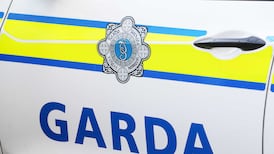Automatic number plate recognition (ANPR) cameras have been used by the Garda for more than a decade. However, the expansion of the system – and sheer level of road traffic offending in the Republic – have now combined to confirm one inescapable fact of policing.
While technology can greatly aid police work, that work cannot be done without policing personnel – and plenty of it.
The Government and the Garda Commissioner, Drew Harris, are already on record as saying we need a much bigger Garda force. At present numbers remain stubbornly at about 14,000, despite accelerated recruitment efforts post-pandemic. But Mr Harris has said a strength of 18,000, as proposed by the Association of Garda Sergeants and Inspectors, was not unrealistic.
And Minister for Justice Helen McEntee has said Garda numbers need to reach the long-held Government target of 15,000 members, and then continue to grow.
RM Block
The Garda force has rolled out more ANPR cameras, to 130 in total, for Roads Policing Units nationwide. However, Garda members have told The Irish Times the cameras are flagging so many suspected road traffic breaches by passing drivers that they simply cannot go after all of them.
[ Cuts to Garda community policing now a ‘major concern’, head of authority saysOpens in new window ]
Instead, those gardaí are picking their battles; deciding in many instances to overlook drivers flagged for one offence by the ANPR cameras so they can prioritise those flagged for multiple offences. Gardaí can only stop so many drivers during any one shift, so they are making decisions to try to catch the worst offenders. That’s their logic.
The problem, in a nutshell, is that while the technology is very helpful to the Garda force, there are simply too few gardaí policing the roads to keep up with the sheer scale of offending on the roads being flagged by the cameras.
Most recently – in a measure formally launched just last week – all members of the force can now establish a vehicle’s insurance status. This is now possible because the Motor Insurers’ Bureau of Ireland (MIBI) data, which shows the status of three million insurance policies, can now be cross-checked roadside by gardaí on their mobility devices.
And because those mobility devices are available to all Garda members – not just roads policing gardaí – it means huge numbers of gardaí are now checking drivers and their vehicles for insurance.
[ Garda train up fresh personnel for secretive ‘protester removal team’Opens in new window ]
This has led to the seizure of 7,307 vehicles so far this year, with some 1,840 vehicles seized in April alone and projections that 15,000-18,000 vehicles could be seized by year end. However, the MIBI also estimated two years ago there were 188,000 uninsured private vehicles on the roads of the Republic.
And even if that number remained stagnant, it would take at least a decade for gardaí to catch all of those drivers, even with the new technology and access to the insurance database.
[ Big increase in drivers caught using phones since new directiveOpens in new window ]
And that is effectively the same scenario now being faced by those Roads Policing Unit gardaí using the ANPR cameras. While the cameras are greatly aiding their work, only the tip of the iceberg of total offending is being detected and acted on.
According to the Department of Justice, the ANPR system primarily supports gardaí “in the detection of tax and insurance offences along with disqualified drivers”. The new push to catch uninsured drivers is seen as significant because gardaí believe those people who drive without insurance are the highest-risk road users generally, meaning there is a big dividend attached to taking them off the roads.
- Listen to our Inside Politics Podcast for the latest analysis and chat
- Sign up for push alerts and have the best news, analysis and comment delivered directly to your phone
- Find The Irish Times on WhatsApp and stay up to date











